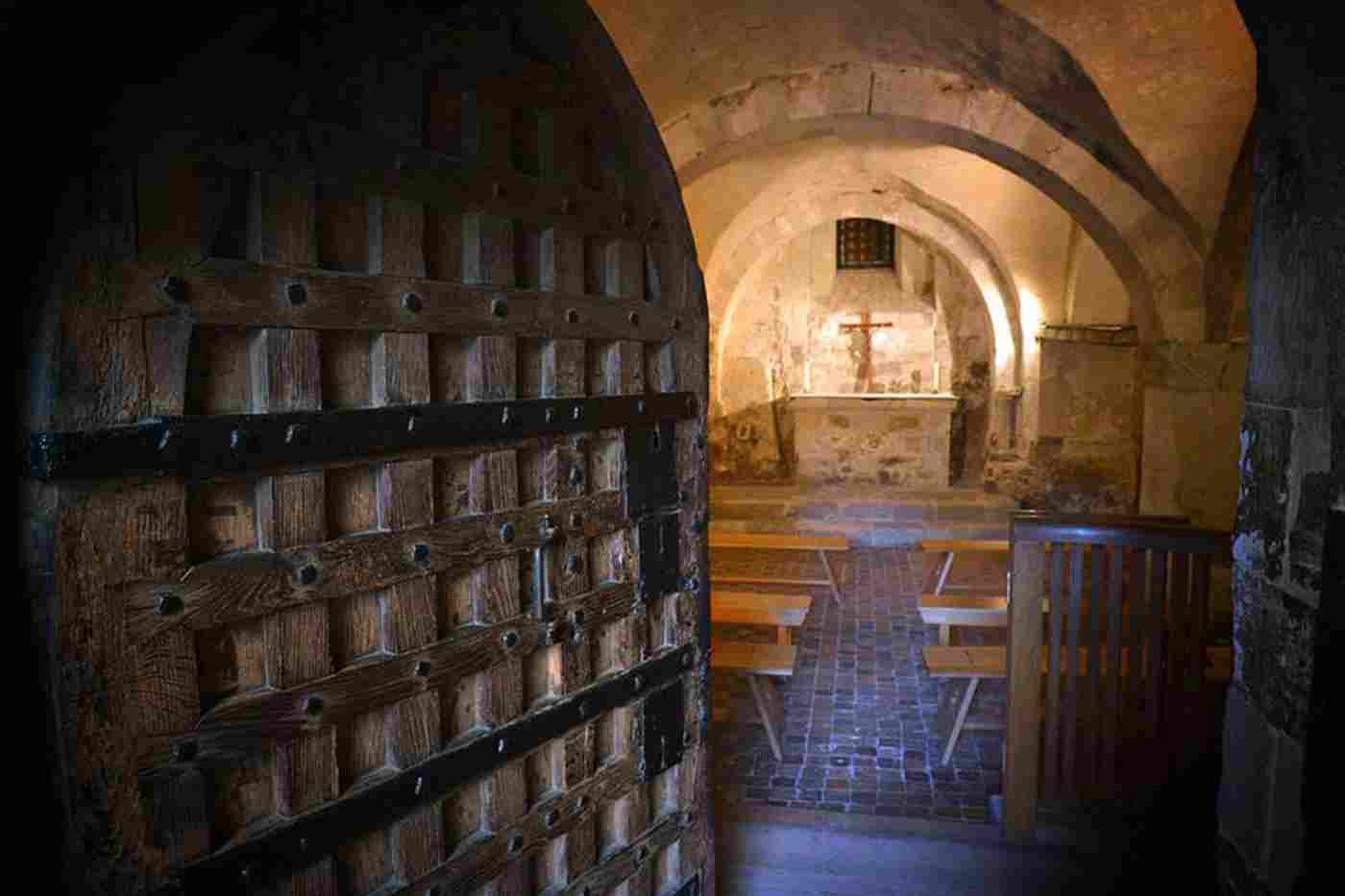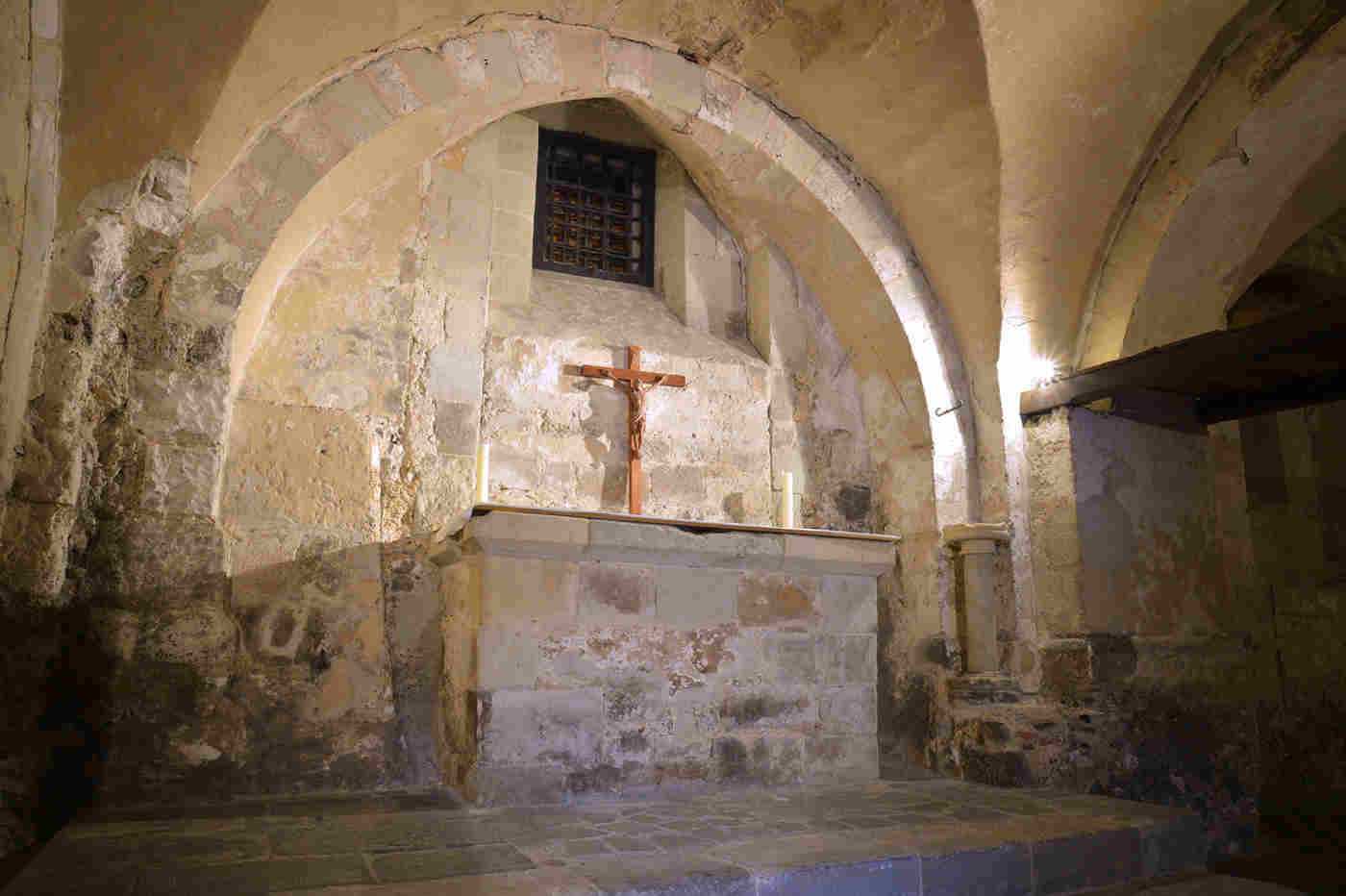Explore our History
Pyx Chamber
The Pyx Chamber is one of the oldest surviving parts of Westminster Abbey.
This low vaulted room off the East Cloister is part of the Undercroft, underneath the monk’s dormitory, which was built about 1070. The Chamber was walled off in the 12th century and made into a treasury in the 13th century, and possibly used as a sacristy when Henry III was rebuilding the main Abbey. The two heavy oak entrance doors date from the early 14th century (the original entrance being from the vestibule of the Chapter House).The chamber still possesses its medieval tiled floor and some tiles from the 11th century. The large curved medieval chest was used to store vestments. The other chests held important treaties and foreign policy documents.

The Pyx Chamber
It takes its name 'Pyx' from wooden boxes in which silver and gold pieces were kept secure to await the "Trial of the Pyx" - melting down the measured silver content as a way of showing that the coinage was pure - established in 1281. The stone table (not an altar) against the east wall was used to test the silver. The Trial continues to this day in Goldsmiths’ Hall in the City of London.

The crucifix in the Pyx Chamber
Further reading
Chapter House and Pyx Chamber Guide
"Pyx chamber unmasked" by W. Rodwell & "Medieval picture proved the key" [Pyx trial] by R. Turner in Westminster Abbey Review no.3 Winter 2017-18




